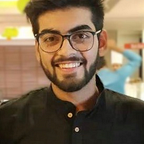Add Video Calling to your Flutter App using Agora.io
How do you ensure that your customers are happy with your service? How can you provide a better way to engage with your team, so that productivity is never compromised? If these are questions that have crossed your mind, then you’ll be pleased to know that I have an answer for you and that answer is really simple: Real Time Engagement (RTE). So what does RTE mean and how can it help your business?
In today’s digital economy everyone is connected with each other virtually and it bridges the distance between two distant users. Your company can be based in the North Pole but it shouldn’t stop you from reaching out to the users in the other corners of the world. RTE ensures that you’re always connected to the people that matter to you and your business. It comes without saying that in today’s world, RTE has a great impact on every field like education, politics, social media, art, and science.
Building your own RTE software can be a little troublesome: maintaining a server, load-balancing and at the same time providing low-latency can make even the best go nuts.
So how can you add RTE to your Flutter application without losing your mind and saving time as well? Well lucky for us, we have Agora’s RTE SDK available to provide support across all the platforms. In this tutorial let’s see how we can add a group calling function to your Flutter app.
How do I start?
Before we start with our Flutter app lets make sure that we have all the required things:
- Flutter SDK: Quite obvious isn’t it?
- Agora’s developer account: To build an app that is using Agora’s SDK you will need an AppID. So to grab your own AppID go to https://console.agora.io/ and quickly create an account and login to your dashboard.
Now navigate to the project management tab and click on the create button. This will let you give a suitable name for your project and give you an AppID linked with it.
Let's Get Going!
Now that we have all the things that we need, let’s make a simple group video calling app. We first need to start with creating a new Flutter project:
flutter create agora_video_call Import Packages
Jump to pubspec.yaml file and under dependencies add agora_rtc_engine package available over here: https://pub.dev/packages/agora_rtc_engine
We will also add permission_handler to get the permission of microphone and camera that will be used during the video call.
After adding all these packages in your pubspec.yaml run the below command from your project’s directory to get the packages:
flutter pub getCode Structure
This would be the structure of the lib folder that we are developing:
To start, let’s remove the default counter code from main.dart such that our dart file looks something like:
For our home page, we will be building a form that takes channel name as an input. So let’s jump to `HomePage.dart` in the pages folder.
So we have successfully made a form that takes channel name as input. Now we need to create a logic for that join button such that it passes the instructions to the CallPage.dart and also asks for users’ microphone and camera’s permission.
Now, before we actually start with building our call screen let’s just keep our AppID separate in utils.dart under the settings folder.
Building the Call Screen
Finally! After all the setup and permission handling, we have everything we need to build our CallPage.dart Let’s just declare some variables that will be used to manage the state of the call.
- The list
_users[]contains the uid of the users who join a particular channel. - We will use
_infoStrings[]to store the logs of the call. - And we will use
mutedto save the state of the microphone. We will be using it to disable and enable the microphone.
Once we create all the variables, we can create an initState() to initialize our AgoraRtcEngine through which we can call the APIs provided by Agora.
_initAgoraRtcEngine()initializes the AgoraRtcEngine and links your app to Agora’s engine using AppID.
_addAgoraEventHandlers()is a function that we will be using to add event handlers to our code. So that we can build our call logs and get the uid of the people as they join.
AgoraRtcEngine.enableWebSdkInteroperability(true)enables interoperability between a mobile device and a web browser or an app.AgoraRtcEngine.joinChannel(null, widget.channelName, null, 0)allows a user to join a channel. Here you can pass optional parameters such as a token (used for authentication) or additional information about the channel.
Now it’s time to build the UI for our video call. As an example, I will be going with a grid view for this group call.
_viewRows()widget is used here to provide that stack view._panel()the widget simply prints the channel logs._toolbar()provides interactive options like muting the microphone, switching cameras, and ending the call.
Before we build that grid we will need a list of users in the call so that our app can auto adjust the screen ratio for each user.
Using all this list let’s define the view:
- View for a single user
- View for multiple users
Now that we have defined our view for users in our group call lets put this inside the _viewRows() widget to form the grid.
Here we built cases based on the number of people in the call and aligned our grid accordingly.
Well, we are done with our grid. Now let’s quickly define the _toolbar to add buttons for muting the call, switching the camera, and disconnecting from the call.
- Muting the call
- Switching the camera
- Disconnecting from the call
Done!
It wasn’t that hard, was it? Now you can easily go ahead and add group calling to your Flutter app. If you weren’t coding along with us this time or if you just want to see the complete code then you can refer to this GitHub repository here.
